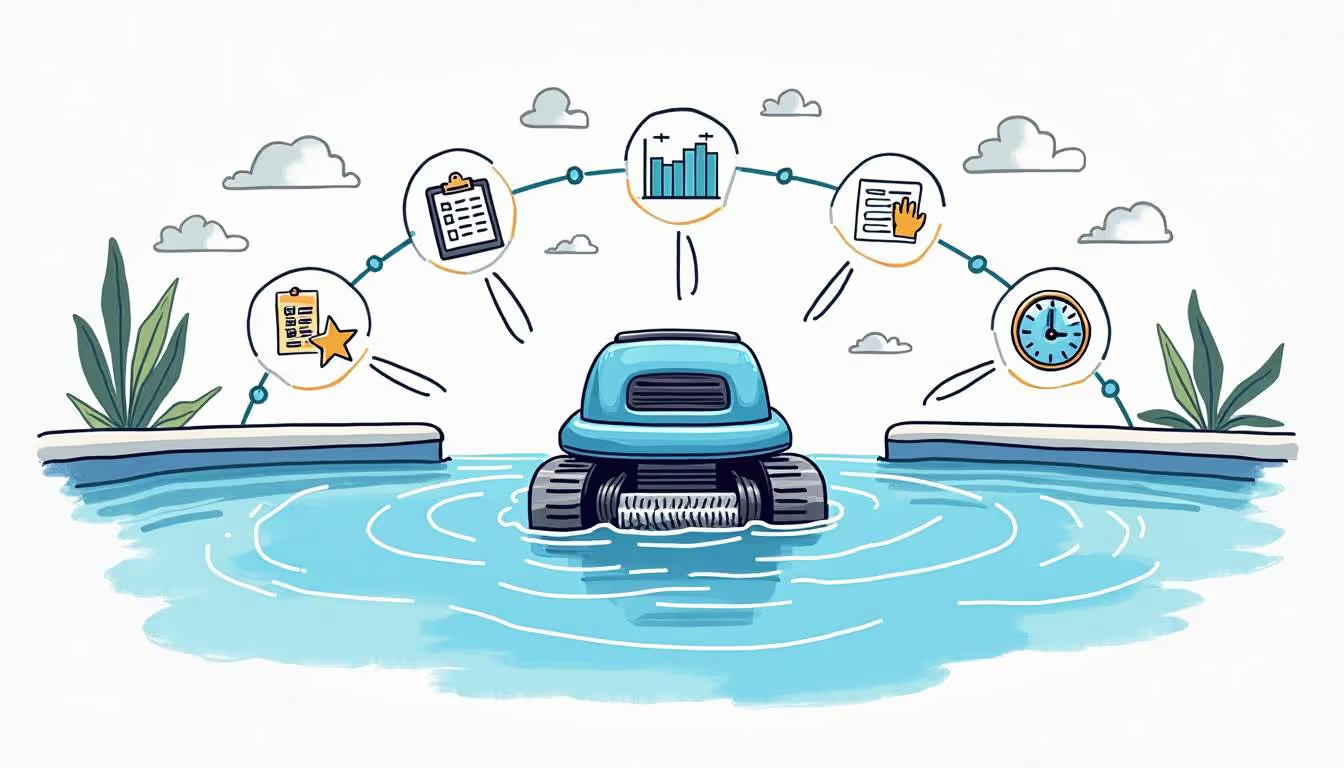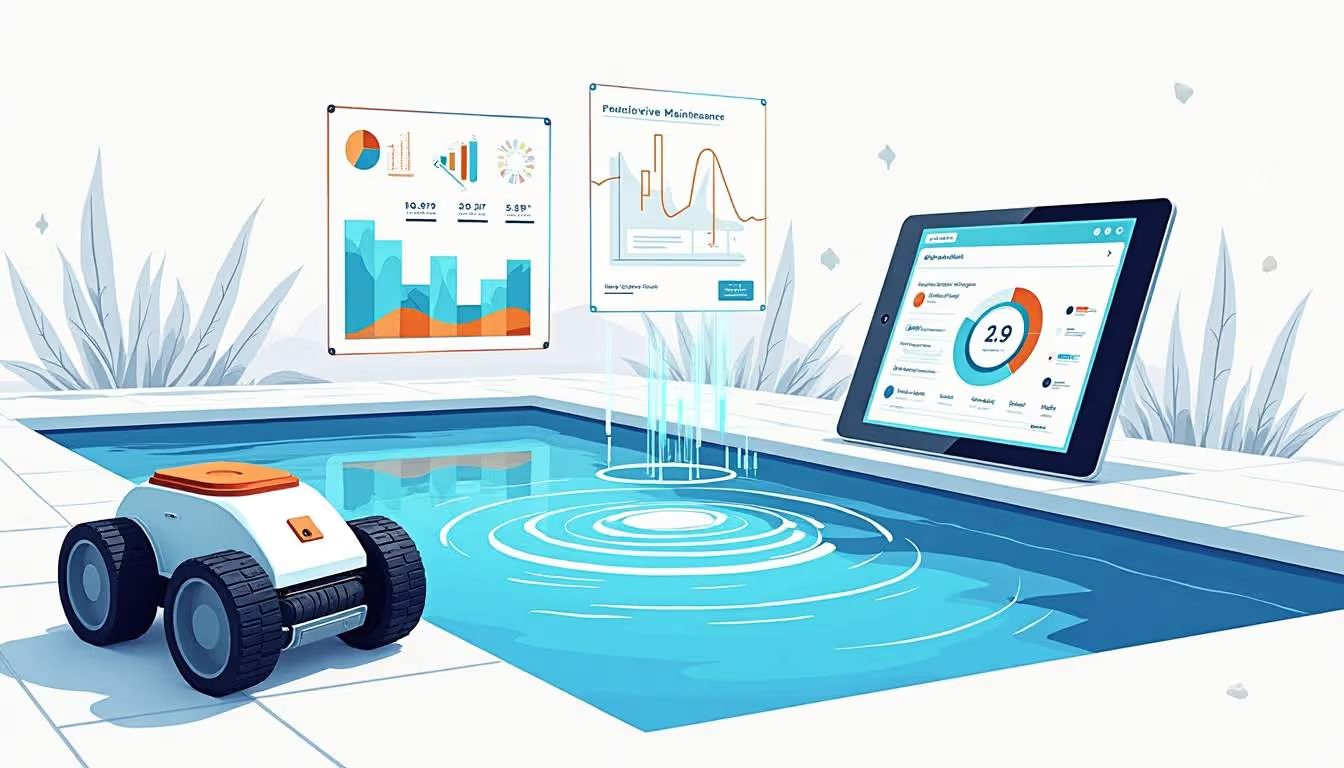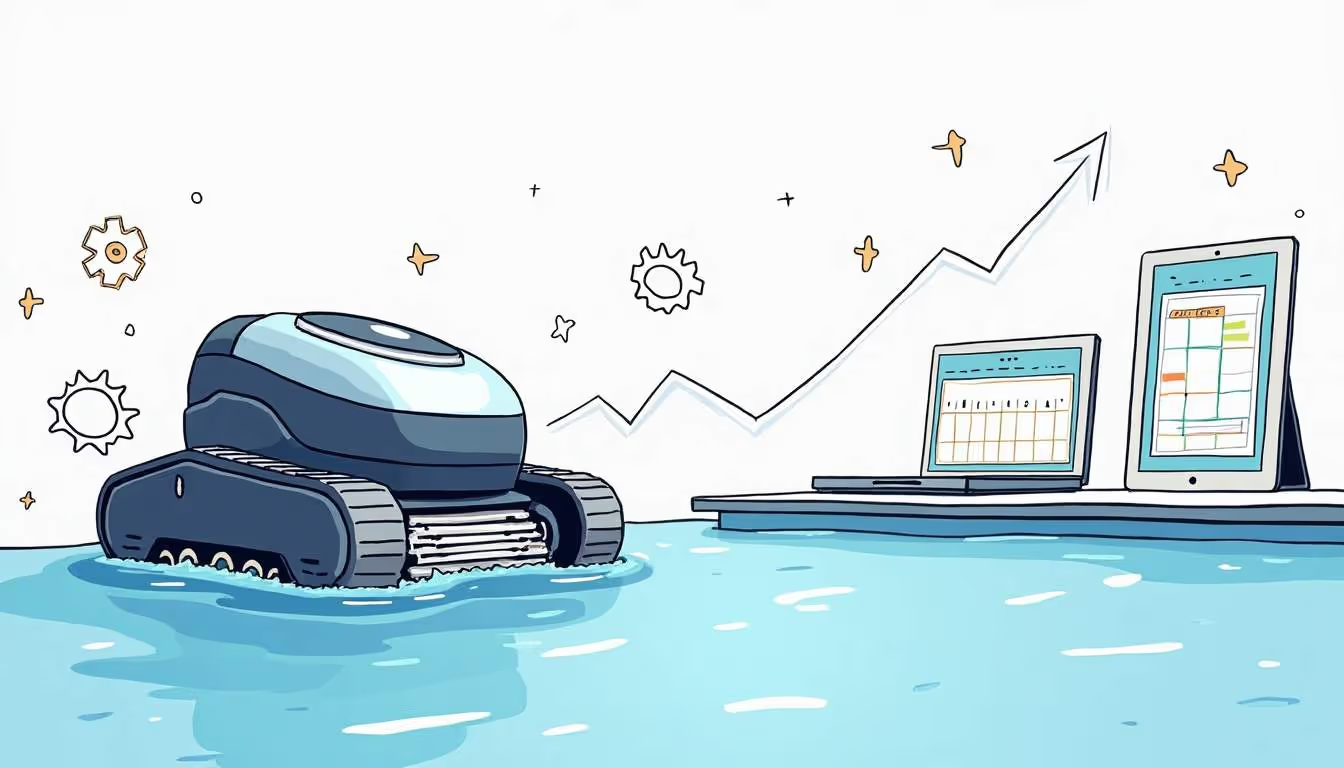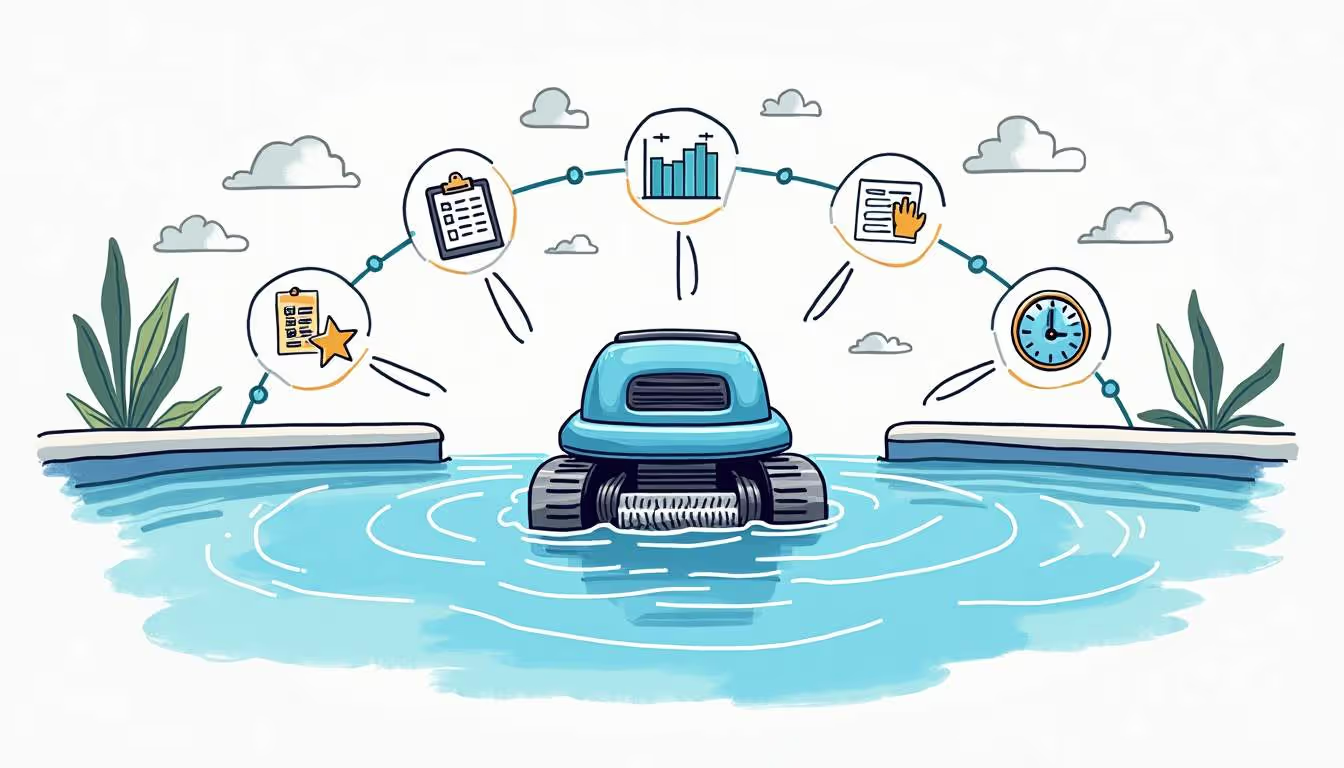Revolutionizing Efficiency: Pool Service Business Automation Solutions
The Growing Demand for Automated Pool Service Management
Over the past decade, the North American pool and spa market has expanded at an average compound annual growth rate of 3.2 percent, according to the Pool & Hot Tub Alliance. With more than 10.6 million residential pools now in operation—and a sizeable uptick in commercial installations—field service teams face a rising volume of maintenance visits, chemical checks, and equipment repairs. Traditional clipboards, text messages, and siloed spreadsheets simply cannot keep pace with this scale. Enter automation: purpose-built software platforms that streamline scheduling, dispatch, inventory tracking, customer communication, and billing in one connected workflow.
For operators, the stakes could not be higher. Aging infrastructure, stringent health codes, and a consumer base accustomed to real-time updates leave little margin for error. Missed cleanings or inaccurate chemical dosing quickly translate into green water, poor reviews, and expensive retests by county inspectors. Automation addresses these pain points by translating complex, repetitive processes into rule-based tasks that run in the background—freeing technicians to focus on water chemistry and customer relationships rather than administrative busywork. The result is a measurable boost in productivity and a stronger bottom line.
Moreover, the integration of automated systems not only enhances operational efficiency but also empowers businesses to harness data analytics for informed decision-making. By collecting and analyzing data on customer preferences, service history, and equipment performance, companies can tailor their offerings to meet specific client needs. This level of personalization fosters customer loyalty, as clients appreciate the proactive approach to maintenance and service. Additionally, automated reminders for service appointments and chemical checks can significantly reduce the likelihood of service lapses, ensuring that pools remain in pristine condition throughout the year.
Furthermore, as the industry evolves, the demand for eco-friendly practices is becoming increasingly prominent. Automated pool service management systems can help companies track their chemical usage and optimize it for environmental sustainability. By utilizing advanced algorithms, these platforms can recommend the precise amount of chemicals needed based on real-time water quality data, minimizing waste and reducing the environmental impact. This not only enhances the company's reputation as a responsible service provider but also aligns with the growing consumer preference for sustainable practices, ultimately attracting a broader customer base that values both quality service and environmental stewardship.
Core Pillars of Automation for Pool Service Businesses
Dynamic Scheduling & Route Optimization
Automated scheduling engines factor in technician certifications, truck capacity, traffic conditions, and customer preferences to generate the most efficient daily routes. A study by DispatchTrack shows that optimized routing can reduce windshield time by up to 20 percent, allowing a mid-sized pool service company to complete roughly two additional stops per technician every day. Calendar changes—whether a sudden storm or an emergency heater outage—trigger real-time adjustments, and customers automatically receive new arrival windows via SMS or push notification. This not only enhances customer satisfaction but also builds trust, as clients appreciate the transparency and reliability of timely updates. Moreover, the integration of GPS tracking allows management to monitor technician locations in real-time, ensuring that any delays can be swiftly addressed, further enhancing operational efficiency.

Integrated Water Chemistry Logging
EPA guidelines mandate accurate recordkeeping for pH, alkalinity, chlorine, and cyanuric acid. Cloud-based mobile apps let technicians log readings directly from the backyard, scan reagent strips with the camera, and immediately receive dosage recommendations. The data flows into the customer record, creating an auditable history that protects against liability claims and simplifies county health inspections. Over the course of a season, digital logs eliminate hundreds of paper sheets, cut transcription time, and reduce chemical overuse by an estimated eight percent. Additionally, these apps can provide technicians with historical data trends, allowing them to make informed decisions about water treatment and maintenance schedules. By analyzing past readings, technicians can identify potential issues before they escalate, ensuring that pools remain in optimal condition and customers enjoy a consistently high-quality swimming experience.
Inventory and Asset Management
From variable-speed pumps to salt cells, replacement parts represent a significant cost center. Automation platforms sync warehouse stock levels with truck inventory, using barcode or RFID scanning to ensure that commonly used parts remain replenished. Low-stock alerts automatically generate purchase orders to preferred suppliers, taking advantage of negotiated tier pricing. Operators prevent costly return visits caused by missing O-rings or gaskets, and accounting teams gain true cost of goods sold visibility in real time. Furthermore, advanced inventory management systems can analyze usage patterns and forecast future needs based on historical data, allowing businesses to optimize their purchasing strategies. This proactive approach not only minimizes excess inventory but also ensures that technicians have the necessary tools and parts on hand to address customer needs promptly, enhancing overall service delivery and customer satisfaction.
Real-World Impact: Statistics and Success Stories
Boosting Technician Productivity
A 2023 benchmarking survey by Service Council found that pool service firms leveraging end-to-end automation completed 26 percent more jobs per technician per week than those relying on manual tools. The efficiency gains stem not only from route optimization but also from digital checklists that eliminate return trips by ensuring every step—brushing, skimming, filter backwash, chemistry balance—is verified before departure. Technicians also snap geotagged photos for proof of service, reducing “he-said-she-said” disputes by 34 percent.
Accelerating Cash Flow
Automated invoicing shortens the order-to-cash cycle dramatically. With mobile payments and card-on-file billing, the average days sales outstanding (DSO) drops from 21 days to just nine, according to data aggregated from more than 800 pool service users across North America. Recurring maintenance plans renew automatically, and late-fee rules trigger reminders without office staff intervention. Improved cash flow empowers owners to invest in higher-margin add-on services such as equipment upgrades or energy-efficient lighting.
Driving Customer Satisfaction
In the era of same-day delivery and ride-share ETAs, clients expect transparency. Automated customer portals display technician location, service history and upcoming appointments in one place. According to BrightLocal, businesses that send real-time service notifications experience a 19 percent higher Net Promoter Score than those that do not. Happy customers remain loyal for an average of 3.6 years and refer friends—critical metrics in a market where word-of-mouth drives up to 40 percent of new residential accounts.
Choosing the Right Software Platform
Scalability and Open Integrations
The ideal platform grows alongside the business. Multi-location franchises require granular role-based permissions, while independent operators might prioritize simple drag-and-drop dispatch. An open API architecture ensures seamless integration with accounting suites, e-commerce storefronts and IoT-enabled pump controllers, future-proofing the tech stack as needs evolve.
Mobile-First Experience
Because technicians spend most of their day in the field, the mobile app must work offline, sync automatically when connectivity returns and present critical information at a glance. Color-coded task lists, voice dictation for notes and push notifications for urgent updates keep teams aligned without phone calls. Look for native iOS and Android builds rather than browser wrappers to ensure stability and device-level security.
Security and Compliance
Customer addresses, credit cards and water test logs constitute sensitive data that must be protected. Leading platforms offer SOC 2 Type II certification, TLS 1.3 encryption and multi-factor authentication. Compliance dashboards help operators maintain PCI standards for payments and OSHA guidelines for chemical handling documentation, shielding the business from costly fines or lawsuits.
Implementation Best Practices and Common Pitfalls
Stakeholder Alignment
Successful rollouts begin with clear objectives: reducing DSO, eliminating paper logs, or scaling to a second territory. Involving technicians, office staff and management in goal-setting sessions fosters buy-in and surfaces potential barriers early. Hands-on training labs, “sandbox” environments and gamified learning modules accelerate adoption, boosting usage rates to over 85 percent within the first 60 days.
Data Migration Strategy
Historic customer data often lives in disparate systems—QuickBooks, Outlook contacts, even hand-written index cards. A phased migration plan, including data cleansing and field mapping, prevents information loss. Import templates and validation rules catch duplicates or missing chemical profiles before they reach production databases. Consistent data ensures accurate reporting and avoids technician confusion in the field.
Avoiding Over-Automation
While automation streamlines operations, human judgment remains essential. Auto-dispatch rules might inadvertently assign a junior tech to a complex acid wash if skill tags are outdated. Regular process audits, exception reports and feedback loops help maintain balance. Businesses that schedule quarterly workflow reviews report 14 percent fewer customer escalations compared with those that “set and forget” their rules engine.
Future Trends in Pool Service Automation
IoT-Enabled Predictive Maintenance
Smart sensors installed on pumps and heaters are already transmitting pressure, flow and temperature data. Machine learning models analyze these streams to predict failures days before they become service calls. The result is a shift from reactive repairs to subscription-based “uptime assurance” plans that lock in recurring revenue and delight facility managers.

Augmented Reality Field Support
Hands-free headsets overlay schematics onto actual equipment, allowing technicians to visualize impeller orientation or electrical pathways without flipping through manuals. Early adopters in California report a 25 percent reduction in average repair time and a significant increase in first-time fix rates. As 5G becomes ubiquitous, expect real-time remote expert assistance to become standard practice.
Sustainability Metrics and Regulatory Reporting
Water scarcity and energy usage are under intense scrutiny. Future software iterations will automatically calculate carbon offsets, water savings from variable-speed pumps and compliance with local drought ordinances. Operators can then deliver sustainability scorecards to eco-conscious homeowners and commercial property managers, turning environmental stewardship into a competitive differentiator.
Conclusion: Turning Efficiency into Competitive Advantage
Automation has moved from a nice-to-have to mission-critical for pool service businesses navigating rising demand, tightening regulations and heightened customer expectations. By digitizing routes, chemistry logs, inventory controls and payments, operators unlock significant productivity gains, accelerate cash flow and elevate service quality. Careful platform selection, structured implementation and ongoing process reviews ensure those gains are sustained over the long term. In an industry where pristine water and punctual technicians define reputation, the organizations embracing intelligent automation today will stand as tomorrow’s market leaders.









